If you ever find yourself in a survival situation on the beach, all you need to do is grab a coconut!

17
COCONUT ROPE
SKILL LEVEL:
EASY
INTERMEDIATE
ADVANCED
APPROXIMATE TIME:
20 minutes
WHAT YOU’LL NEED:
+ Coconut husk
LET’S BEGIN
SETUP
1. Taking a dry coconut, you’ll notice the brown husk fluff inside. Using your fingertips, pull off bits of the fluff.

2. Then make it so your fine, fluffy fibers are in a ball.
PRO TIP: You want to get the finest fibers possible. Discard any fibers that are too hard, keeping as much of the fine, fluffy fibers as you can.
MAKING THE BASE OF THE ROPE
1. Using your finger and thumb, begin twisting in one direction from your ball of fibers and give a little tug.
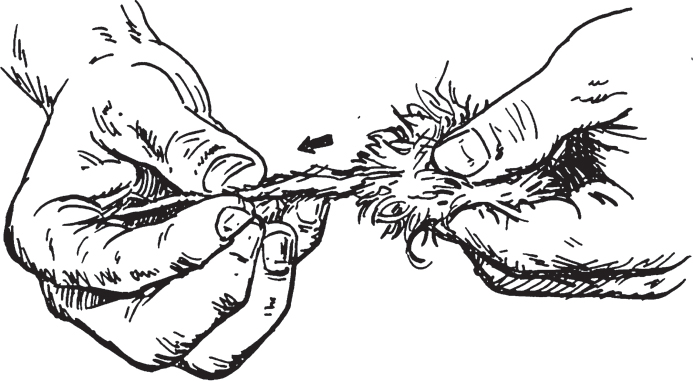
2. As you tug and twist, like magic, the ball of fibers should continue to pull into a string until there is nothing left of the ball. Now you have a small piece of cordage.

STRENGTHEN YOUR CORDAGE
1. The cordage you pulled from your ball of husk fibers is not very strong. To make a stronger piece of rope you will want to do a reverse twist. First you will take your cordage and bend it in half at the middle.
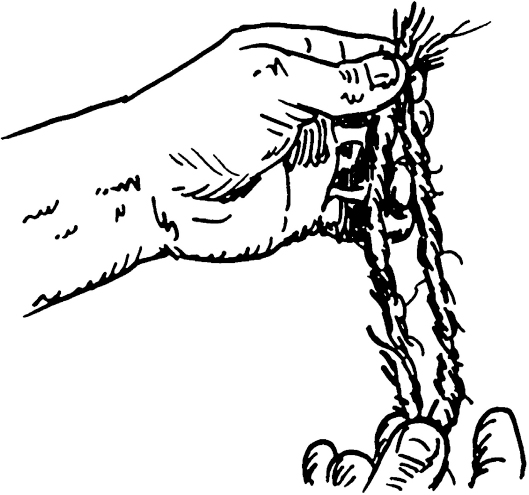
2. Take the left side and twist it in the same direction you were twisting before, which should put some tension on the cord.
3. Next, place that over the other side of the string and pinch it with your finger and thumb.
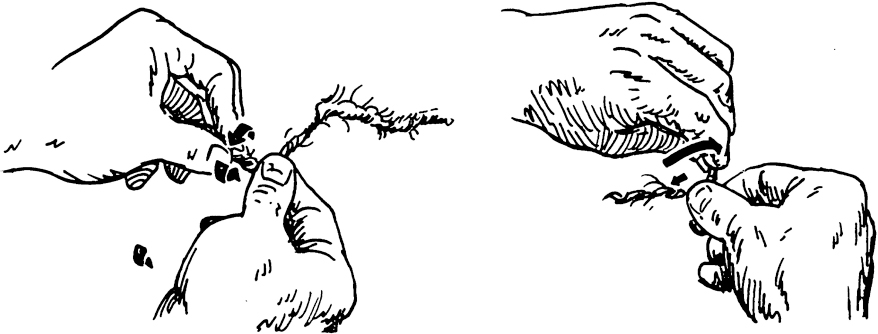
4. Repeat this with the other side, which now should be on the left. Continue this process until you are out of cordage. The reverse twist locks the two sides together so it cannot come undone.
LENGTHEN YOUR ROPE
1. Now you have a rather short piece of rope. To lengthen your rope you will want to graft the ends to another piece of cordage.
2. You can graft some already made cordage to the end of your rope by rubbing the fibers at the ends of the two pieces together and giving it a little twist.
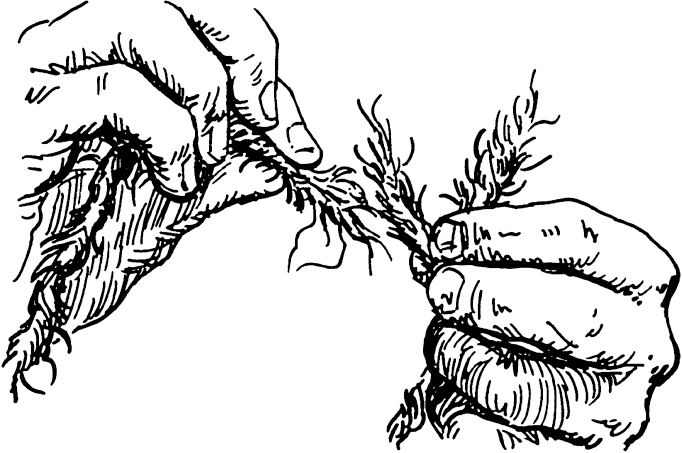
3. By doing this you can make your rope as long as you want, and you will barely notice where the two ends were grafted together once you reverse-twist it together.
AN EVEN STRONGER ROPE
1. The single reverse twist made stronger rope out of the single cordage, but to make even stronger rope you can repeat the reverse twist again, this time twisting counterclockwise.
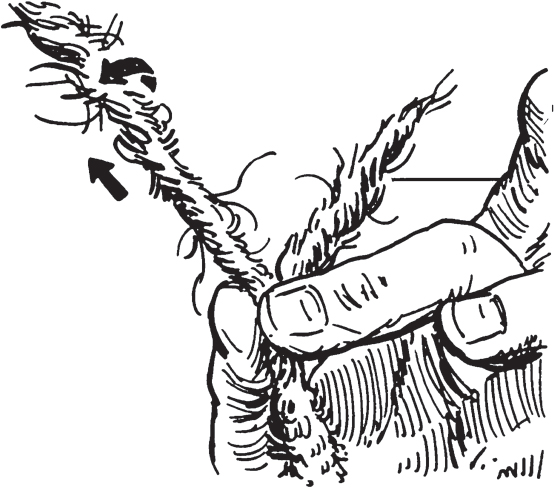
PRO TIP: Pull it to work out some of the rope’s tension and repeat the process for even more strength.
2. This time twist the left side counterclockwise and go underneath. It looks like an actual rope, but it was simply woven with your hands!
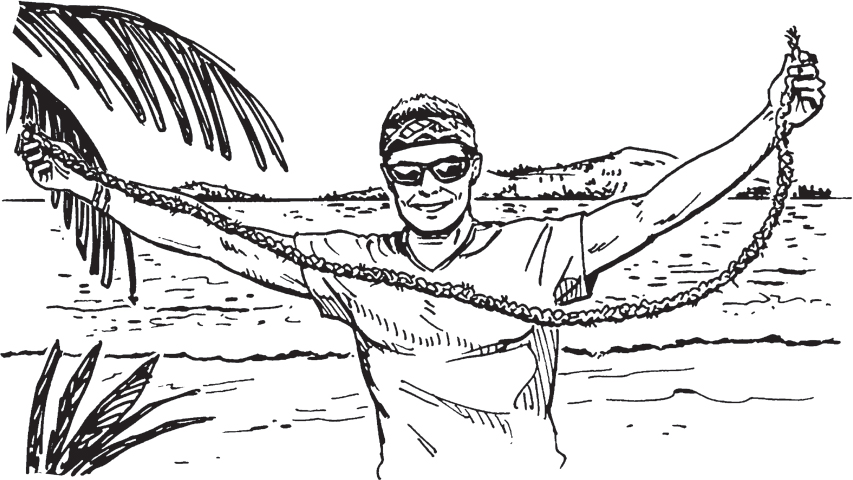
Who even knew that this tropical fruit could double as a utility or survival device? Rope is extremely versatile. Make it any length or thickness and experiment with just how much weight it can hold or drag. From now on, your friends would definitely pick you if they had to be stranded on an island with someone!
FUN FACT: The coconut has many uses. The natives of the Kiribati Islands used it to create armor, the Japanese launched the coconut as a grenade in World War II, and the coconut husk, when burned, has been found to repel mosquitos.